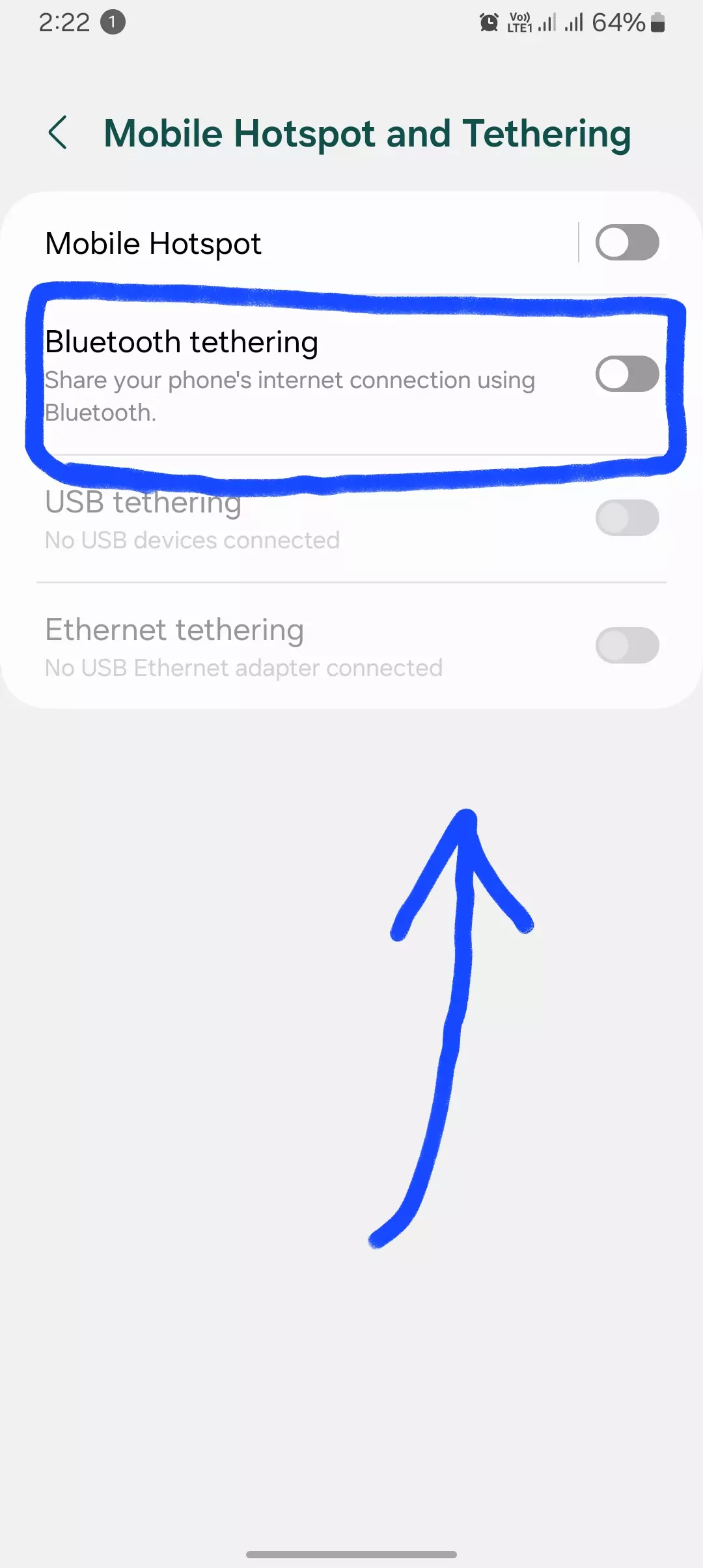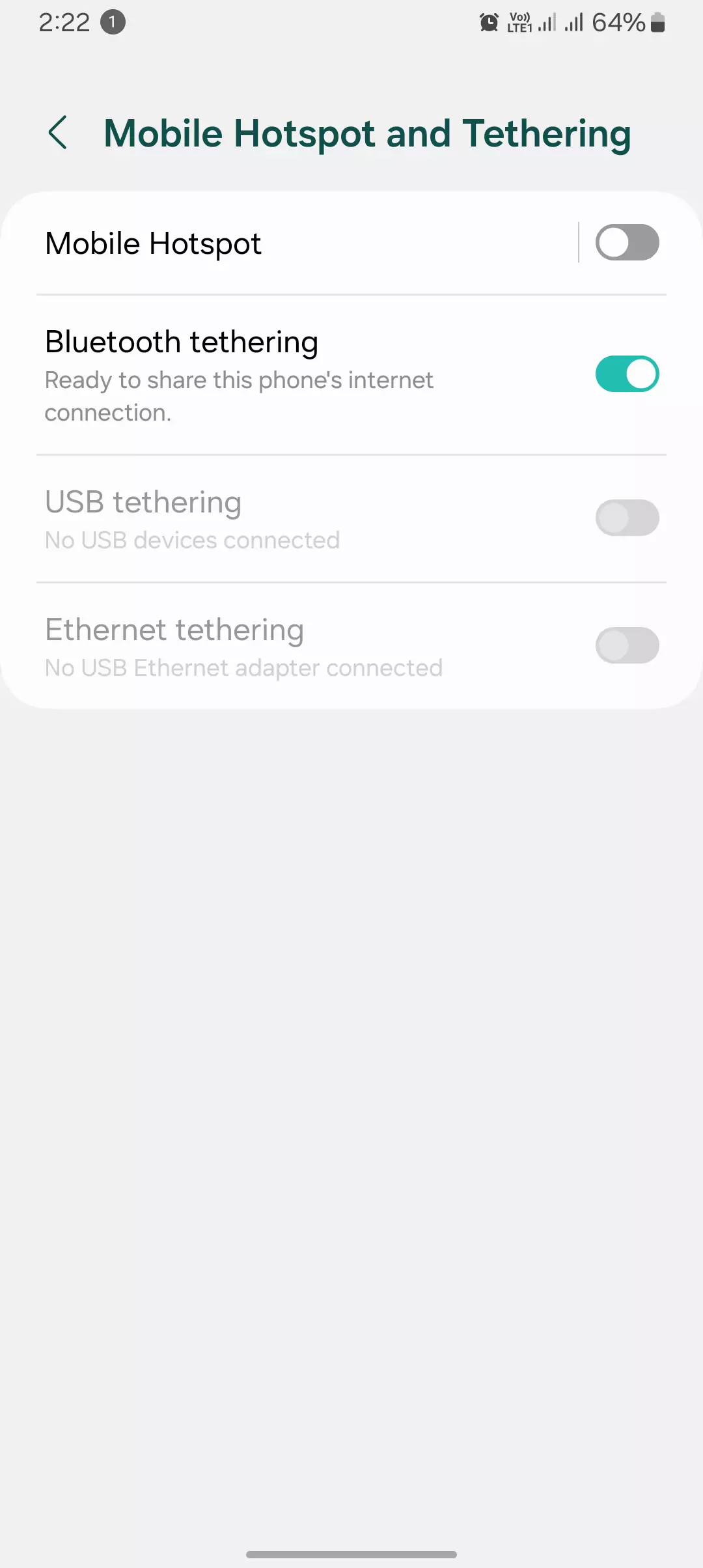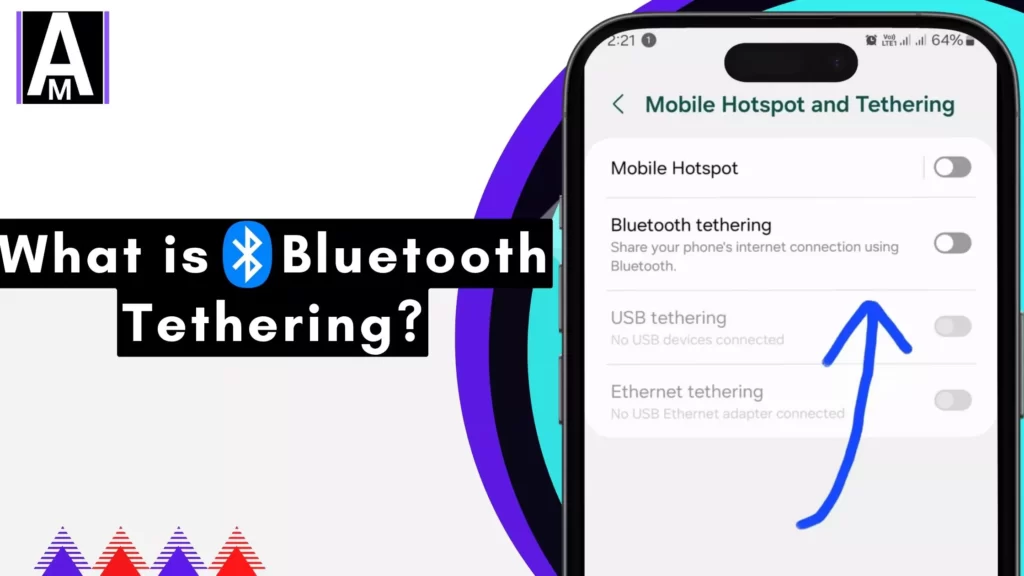This is the blog post where we are going to show you exactly what Bluetooth tethering is, how you can use it, and provide a detailed exploration of the pros and cons. Everything will be presented with comprehensive information, including screenshots and details. Let’s get started!
Quick Summary
- Overview: Bluetooth tethering allows you to share your phone’s internet wirelessly with other devices using Bluetooth.
- How it works: One device shares its internet (host), and another connects to it via Bluetooth to get online access (client).
- Pros: Handy for sharing internet on the go, useful when Wi-Fi isn’t available, great for devices with limited data plans.
- Cons: Slower than Wi-Fi, shorter range, and may use more battery. Carrier data restrictions may apply.
Now, let’s dive deeper into the world of Bluetooth tethering and explore its inner workings, setup processes, limitations, and how it compares to other options like Wi-Fi and USB tethering. Buckle up, and get ready to unleash the internet-sharing power of your phone!


Comparing Bluetooth Tethering With USB Tethering and WiFi Hotspot
Tired of internet dead zones? This handy table compares Bluetooth tethering, Wi-Fi hotspot, and USB tethering to help you choose the right tool for the job:
| Feature | Bluetooth Tethering | Wi-Fi Hotspot | USB Tethering |
| Speed (Mbps) | 3-10 | 20-75 | 480 (USB 2.0), 5 Gbps (USB 3.0) |
| Range (meters) | 10-20 | 10-50 | Direct connection |
| Stability | Moderate | High | Highest |
| Security | Low (WPA2 only) | High (WPA2/WPA3) | Highest (Direct physical connection) |
| Battery drain | High | Moderate | Low |
| Number of devices supported | 1-2 | Unlimited | 1 |
| Best for: | * Sharing internet on-the-go * Short-range connections * When Wi-Fi and USB are unavailable | * High-speed data transfer * Connecting multiple devices * Long-term connections | * Maximum stability and security * Minimal battery drain * Direct file transfer from phone |

Apps that can use tethering:
- Web browsers
- Email clients
- Social media apps
- Streaming services
- Gaming apps
- Any app requiring internet access
Situations by Tethering Method
- Bluetooth: * Sharing internet with a single device in a car or tent. * Supplying the internet for your laptop in a cafe with limited Wi-Fi.
- Wi-Fi: * Providing internet for all devices in a house or campsite. * Connecting multiple devices for a movie night on the road.
- USB: * Transferring large files between your phone and computer. * Providing a stable internet connection for video conferencing.

But Wait, There’s a Catch (Like Most Good Stories)
In my experience, Bluetooth tethering, akin to a hero, carries its own set of limitations that set it apart. Picture it as a gentle stream in contrast to Wi-Fi’s blazing speed—it’s more akin to navigating a winding country lane than speeding down a high-speed highway. Additionally, its range is shorter, so don’t count on powering an entire campsite with your phone’s digital generosity. And, just like any good friend, your phone’s battery might drain faster while playing the internet fairy godmother.

The Big Tethering Showdown: Bluetooth vs. Wi-Fi vs. USB
So, let’s have a showdown of the big tethering methods: Bluetooth vs. Wi-Fi vs. USB. Is Bluetooth the undisputed king of internet sharing? Not quite. Each method has its strengths and weaknesses.
Wi-Fi
In my case, Wi-Fi boasts super-fast speeds and a wider range, but it requires infrastructure like routers and might not be available everywhere.

USB Tethering
On the other hand, USB tethering is the wired warrior, offering a rock-solid connection but restricting my phone’s mobility. It’s like being chained to my laptop—not ideal for spontaneous dance sessions.
Bluetooth Tethering
This is where Bluetooth tethering steps in as my flexible friend, ready to save the day when Wi-Fi is nowhere to be found, and USB feels too rigid. I recommend considering it as your internet lifeline in unexpected situations—like that cozy cabin losing its Wi-Fi, your laptop data plan giving up on a road trip, or simply when you want to share the internet bounty with a travel buddy. So, in my case, Bluetooth tethering becomes the go-to option in these scenarios.

From my experience, Bluetooth tethering is a way to share your phone’s internet with other devices, similar to Wi-Fi. It’s handy for shorter distances, although it might be a bit slower compared to Wi-Fi.
Bluetooth Tethering: Pros and Cons in Today’s World
| Pros | Cons |
| ✅ Convenient: Easily share your phone’s internet with other devices without additional hardware. | ❌ Slower speeds: Expect download speeds of 3-10 Mbps, significantly slower than Wi-Fi or USB. |
| ✅ Flexible: Ideal for situations where Wi-Fi is unavailable or limited, like on hiking trips or in rural areas. | ❌ Short range: Effective only within 10-20 meters of your phone, limiting tethered devices’ mobility. |
| ✅ Low setup: Activate tethering with just a few clicks in your phone’s settings. No need for cables or configuration hassle. | ❌ Battery drain: Tethering significantly drains your phone’s battery, requiring more frequent charging or external power banks. |
| ✅ Security (moderately): WPA2 encryption protects data transfer, although not as secure as WPA2/WPA3 used by Wi-Fi hotspots. | ❌ Data usage concerns: Monitor your data plan as tethering can quickly gobble up your allotted data if not used cautiously. |
| ✅ Limited device support: Typically allows connection for only 1-2 devices simultaneously, unlike Wi-Fi hotspots that can handle many more. | ✅ Cost-effective: No additional hardware or subscription fees required for tethering, unlike some dedicated mobile hotspots. |
| ✅ Multi-platform compatibility: Works across various devices like laptops, tablets, and even other phones with Bluetooth capability. | ❌ Potential compatibility issues: Older devices or unsupported operating systems might experience connection problems. |
Facts and Numbers:
- The average worldwide mobile data usage in 2023 is projected to reach 26.2 GB per month. Tethering can significantly contribute to this usage if not monitored.
- Bluetooth 5.2, the latest standard, boasts improved data transfer rates and lower power consumption compared to previous versions, slightly mitigating tethering’s drawbacks.
- Many mobile carriers offer specific data plans with tethering capabilities, catering to users who frequently rely on this technology.
Tether Responsibly, My Friends!

With great power comes great responsibility, and the same goes for your phone’s newfound internet-sharing ability. Be mindful of your data usage, especially if roaming charges lurk in the shadows. Remember, your generosity might not extend to everyone (looking at you, freeloading friend!).
How I Have Used Bluetooth Tethering In Past
Now, Bluetooth is something that I have used throughout my entire childhood. Back when I had keypad phones, there was very limited internet connection in India. Many of my friends had Nokia smartphones, which had the option of Bluetooth tethering, a feature not available in every keypad smartphone. So, in those smartphones, where Wi-Fi wasn’t an option, we had to resort to Bluetooth tethering. We would establish a connection between both smartphones and then use the internet, accessing Google at a very slow speed.
This is my personal experience with Bluetooth tethering, a method that allows you to share your mobile data with other smartphones, similar to using Wi-Fi or a hotspot. Bluetooth tethering enabled phones to share mobile data over shorter ranges and at slower speeds compared to Wi-Fi.
Conclusion
So that is it for today’s blog post, and in today’s post, we have dedicated it to exploring what Bluetooth tethering is, how it works, and the pros and cons associated with it. Can you use Bluetooth tethering in today’s world? These are all the questions that I have aimed to answer with this blog post. I hope you enjoyed the information. I aimed to change all the tables and provide details on different types of tethering available on smartphone devices. Now, go forth, spread the internet love, and turn your phone into a digital lifesaver, one byte at a time!
Let me know what your thoughts are on it and what your experience was the first time you used it. Are you planning to use it now? If you have any specific questions or doubts, feel free to contact us here.
